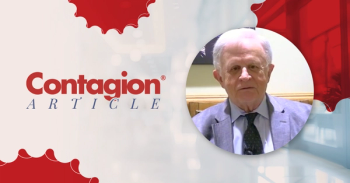
Third Person Declared HIV-Free
The unidentified German man cleared the virus after hematopoietic stem cell transplantation (HSCT), and seems to have eliminated the HIV reservoir, which would be further along than the first two HIV-free patients who underwent the same procedure.
A man in his 50s is reported to be the third person ever to have been declared “HIV-free” after he underwent HSCT that replaced his bone marrow cells with HIV-resistant stem cells from a donor.
The patient was monitored for several years postop, before the HIV-free declaration was made.
The findings were published in
This man is being referred to as the Dusseldorf patient, and has not been publicly identified. He was diagnosed with HIV-1 in January 2008. The patient was on an antiretroviral (ART) regimen and maintained extremely low levels of HIV.
He was later diagnosed with acute myeloid leukemia. In 2013, a team at Düsseldorf University Hospital in Germany destroyed the patient’s cancerous bone marrow cells and replaced them with stem cells from a donor with the cell mutation that was HIV virus-free.
The patient’s clinicians continued ART for 69 months post-HSCT up until November 2018. In four subsequent plasma samples, no antiretroviral agents were detected after analytical treatment interruption (ATI).
Up until now, the first two patients were declared HIV-free but not considered cured. Typically, the immune system keeps the HIV virus locked up in reservoirs in the body, and if a person stops taking ART, the virus can begin replicating and spreading.
A cure would eliminate this reservoir, and according to the investigators, this is what appears to have happened for the Dusseldorf patient.
In a statement, the Dusseldorf patient said it has been a “very rocky road,” for him.
Upon first consideration, some may ask about broad application to this clinical approach in hopes of helping more patients be declared HIV-free.
In a subsequent commentary announcing the research findings, an article in
There is research looking into replacing patients’ own stem cells and modifying them.
“This third case of HIV-1 cure after allogeneic CCR5Δ32/Δ32 HSCT provides detailed information on the virological and immunological signature before and after ATI and generates valuable insights that will hopefully guide future cure strategies,” the investigators concluded.
Newsletter
Stay ahead of emerging infectious disease threats with expert insights and breaking research. Subscribe now to get updates delivered straight to your inbox.






























































































































































































































































































































